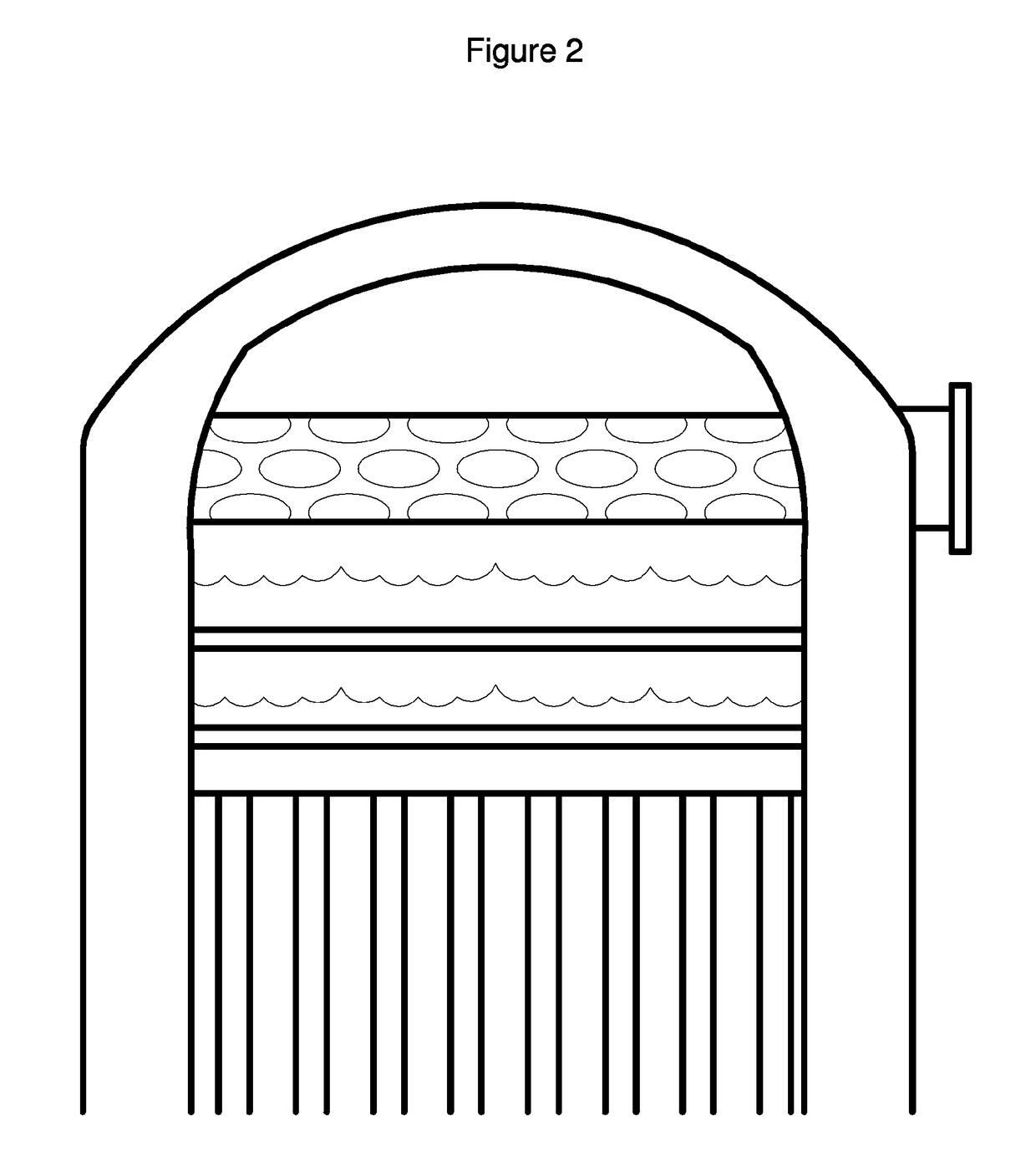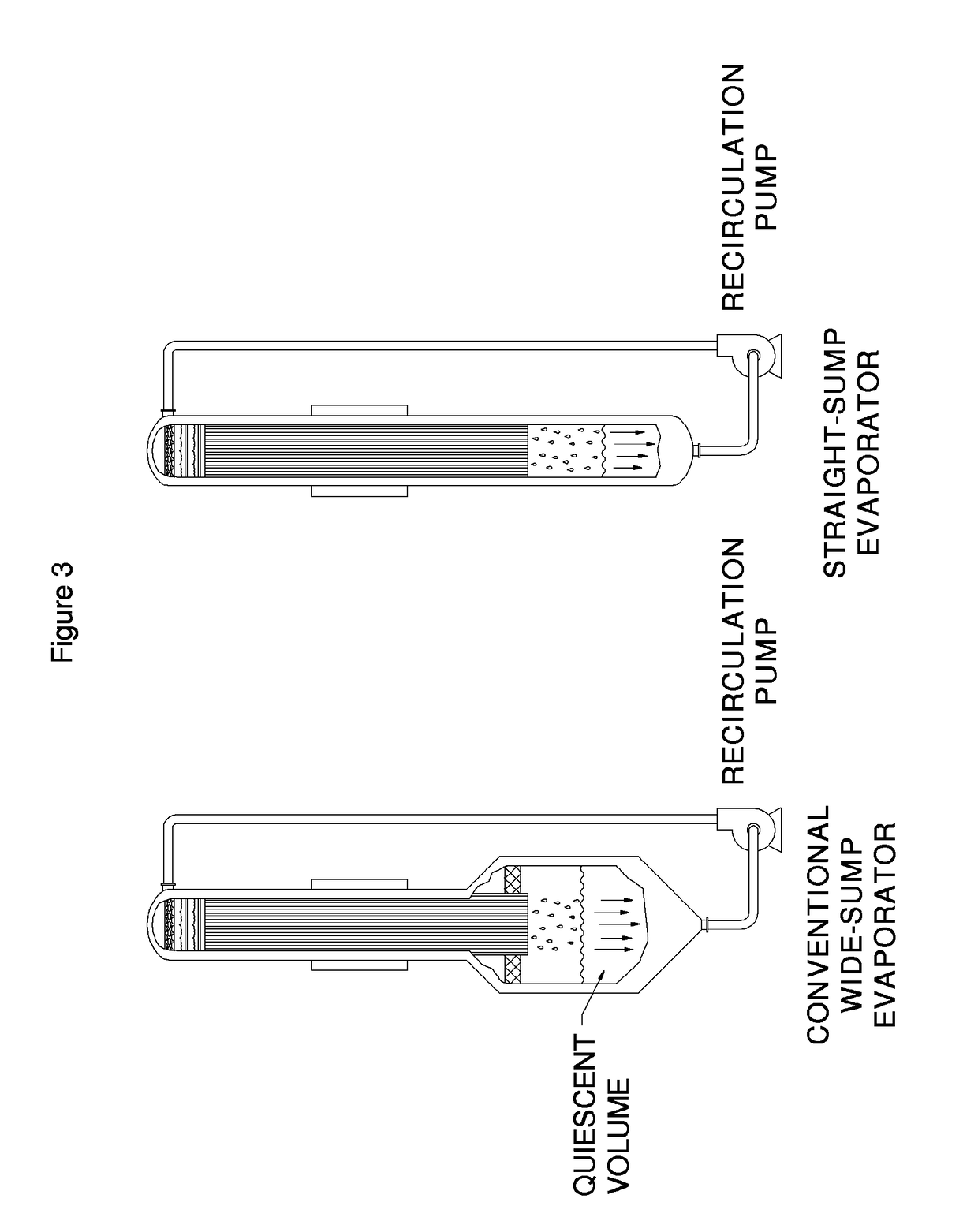Method for production of high purity distillate from produced water for generation of high pressure steam
a high-purity distillate and produced water technology, which is applied in the direction of sustainable manufacturing/processing, well accessories, and separation processes, can solve the problems of contaminating the distillate quality, affecting the production efficiency of high-purity distillates, etc., to achieve the effect of reducing or eliminating the need for downbore wastewater disposal, reducing operating pressure, and reducing the need for adsorption
- Summary
- Abstract
- Description
- Claims
- Application Information
AI Technical Summary
Benefits of technology
Problems solved by technology
Method used
Image
Examples
example 1
[0063 describes performance of an evaporation system treating produced water by generating high quality distillate. A pilot scale test was run on a representative sample of produced water from a SAGD process to ascertain the effectiveness of several design enhancements. The objectives were 1) to prove the effectiveness of softening the produced water upstream of the evaporator and 2) to prove that straight-sump falling film evaporator design could process a high amount of oil and grease. Of course, the satisfaction of these test objectives should not be viewed as a requirement for an embodiment to be within the scope of the claims. The total run time of the pilot testing was 972 hrs. The evaporator system was operated at a concentration factor of 26 for a net recovery of 96%.
[0064]The process stages included produced water softening reactor, produced water preheater, deaerator, vertical-tube falling film evaporator (straight-sump), multiple-stage mist elimination, and a final vapor ...
PUM
| Property | Measurement | Unit |
|---|---|---|
| pH | aaaaa | aaaaa |
| diameter | aaaaa | aaaaa |
| run time | aaaaa | aaaaa |
Abstract
Description
Claims
Application Information
 Login to View More
Login to View More - R&D
- Intellectual Property
- Life Sciences
- Materials
- Tech Scout
- Unparalleled Data Quality
- Higher Quality Content
- 60% Fewer Hallucinations
Browse by: Latest US Patents, China's latest patents, Technical Efficacy Thesaurus, Application Domain, Technology Topic, Popular Technical Reports.
© 2025 PatSnap. All rights reserved.Legal|Privacy policy|Modern Slavery Act Transparency Statement|Sitemap|About US| Contact US: help@patsnap.com



